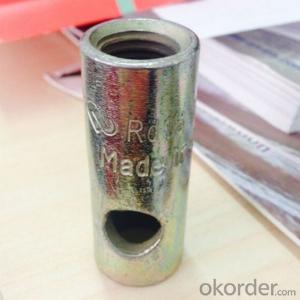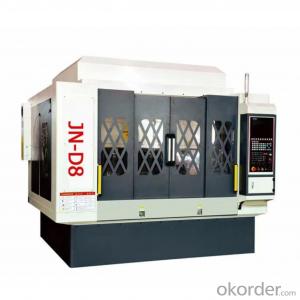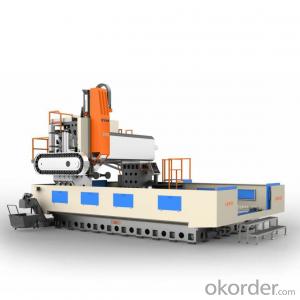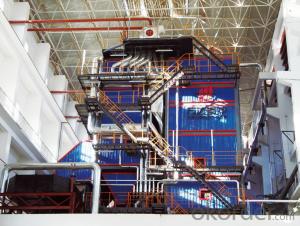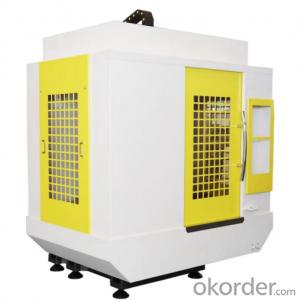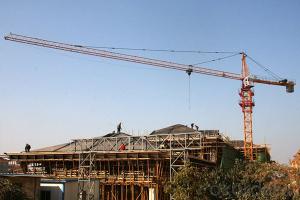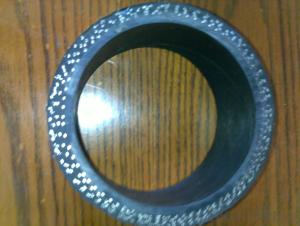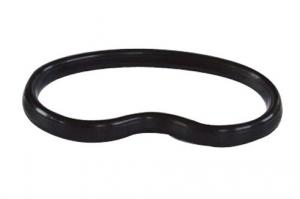Concrete Lifting Socket for Constrcution Useing
- Loading Port:
- Tianjin
- Payment Terms:
- TT OR LC
- Min Order Qty:
- 100 pc
- Supply Capability:
- 10000 pc/month
OKorder Service Pledge
OKorder Financial Service
You Might Also Like
Concrete lifting socket for construction hardware
Specifications:
1) Diameter: M/RD 12 - 36mm
2) Length: 40 - 200mm
3) Capacity: 0.5 - 12.5MT
4) Material: stainless 304/316, ST52.3
5) Surface: plain, galvanized
Thread M/RD 12-52 lifting socket
Testing before shipment
Provide test certificate
Products available: lifting socket,lifting insert, bend and waved socket, transport socket, flat socket, socket with bar and more
2.Packaging and delivery:
Packaging details: goods packed in cartons and then on the pallete
Delivery lead time: within 25 days after getting payment
3.Primary competitive advantages:
1)More than 10 years focus on building material manufacturing
2)On-time delivery within 25 days after confirming order
3)Eathu’s products are enhanced by the QA and quality control checks during the production, if necessary each order can be send out with a certificate referring back to test
4)Precast concrete elements may be lifted several times after casting and during storage and erection-by using this system, the designer and the worker manager ensure that each lift is carried out safely and quickly
· Product Performance
· Prompt Delivery
· Quality Approvals
· Reputation
· Service
· Small Orders Accepted
· Experienced Staff
· Form A
· Guarantee/Warranty
· Packaging
· Price
· Product Features
· More Than 10 Years Experience
· Testing before Shipment
Market:
Asia
Australasia
Central/South America
Mid East/Africa
North America
Western Europe
FAQ:
Q1: How long about delivery time Concrete Lifting Socket ?
A1: The delivery time will be very short, normally we keep the raw materials for old customers and sometime we also keep stock products to
make sure delivery time in any emergency cases.
Q2: How do we guarantee the quality of our Concrete lifting socket?
A2: We have established an advanced quality management system which conducts strict quality tests at every step, from raw materials to the final product. At the same time, we provide extensive follow-up service assurances as required.
Q3: How soon can we receive the product after purchase?
A3: Within three days of placing an order, we will book the vessel for goods. The specific shipping date is dependent upon international and government factors, but is typically 7 to 30 workdays.
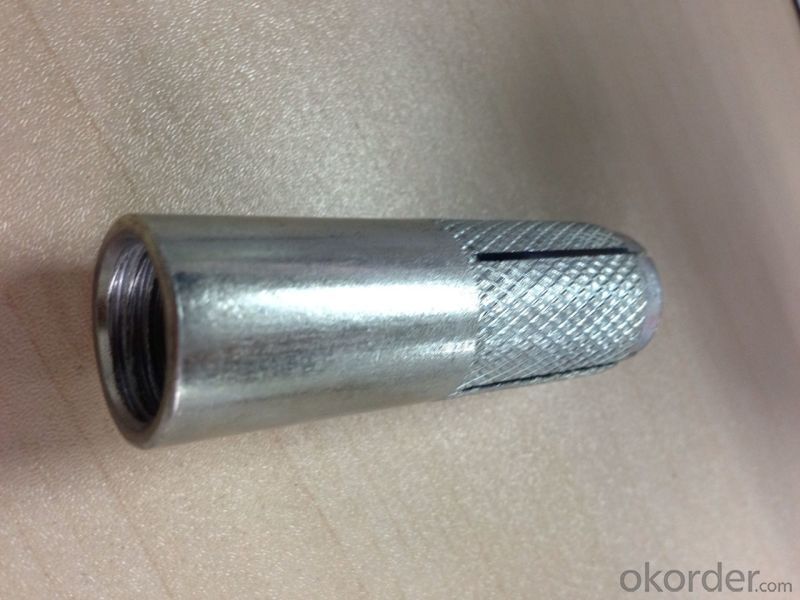

- Q:Are there any specific quality control measures for the production of concrete pump spare parts?
- Concrete pump spare parts are subject to specific quality control measures to guarantee that they meet the necessary specifications and are of excellent quality. Standardized production processes are one of the primary quality control measures employed. Manufacturers adhere to particular procedures and guidelines during the production of spare parts, ensuring consistency and accuracy. This involves using high-quality materials, precise measurements, and advanced manufacturing techniques. To further ensure quality, rigorous testing and inspection take place throughout the production process. Dimensional checks, hardness tests, and material composition analysis, among others, are conducted to identify any defects or deviations from the required standards. Prompt corrective actions can then be taken. To continuously improve production processes, manufacturers may implement quality management systems like ISO 9001. These systems establish quality objectives, monitor performance, and implement corrective actions when needed. Furthermore, manufacturers may seek third-party quality assessment and certification. Independent organizations conduct audits and inspections to ensure that the spare parts meet the required quality standards. Certifications from these programs provide customers with assurance regarding the quality and reliability of the spare parts. In conclusion, the production of concrete pump spare parts undergoes strict quality control measures to meet necessary specifications and ensure high quality. These measures contribute to the performance, durability, and reliability of the spare parts in concrete pump applications.
- Q:What is the first generation pumping technology of concrete pump?
- The machine assembly is simple and the production cost is low, but the electrical control is complex
- Q:How do I properly maintain and replace hydraulic valves in concrete pump spare parts?
- Proper maintenance and replacement of hydraulic valves in concrete pump spare parts is essential to ensure the smooth operation and longevity of the equipment. Here are some steps to follow: 1. Regular Inspection: Regularly inspect the hydraulic valves for any signs of wear, damage, or leakage. Look for cracks, corrosion, or any other visible defects. It is important to catch any issues early on to prevent further damage. 2. Cleanliness: Keep the hydraulic valves clean to prevent dirt, debris, or contaminants from entering the system. Use a suitable cleaning agent and a lint-free cloth to wipe the valves and remove any buildup. 3. Lubrication: Proper lubrication is crucial for the smooth operation of hydraulic valves. Refer to the manufacturer's guidelines to determine the appropriate lubricant and the recommended schedule for lubrication. Apply the lubricant as per the instructions provided. 4. Replacement: If a hydraulic valve is damaged or worn out beyond repair, it is important to replace it promptly. Identify the correct replacement valve by referring to the equipment's manual or consulting with the manufacturer. Ensure that the replacement valve matches the specifications required for your concrete pump. 5. Professional Assistance: While some maintenance tasks can be done by operators, it is advisable to seek professional assistance for complex maintenance and replacement procedures. Professional technicians have the expertise and knowledge to handle hydraulic valves safely and effectively. 6. Safety Precautions: Always adhere to proper safety protocols when working with hydraulic valves. Remove any sources of pressure and fully depressurize the system before attempting any maintenance or replacement. Wear appropriate personal protective equipment, such as gloves and safety goggles, to protect yourself from potential hazards. Overall, regular maintenance, timely replacement, and adherence to safety guidelines are essential for properly maintaining and replacing hydraulic valves in concrete pump spare parts. Following these steps will help ensure the reliable and efficient operation of your equipment.
- Q:How does a concrete pump S valve function?
- A concrete pump S valve functions by controlling the flow of concrete from the hopper to the discharge outlet. The S valve is a crucial component in the concrete pumping system as it allows for the precise and efficient delivery of concrete to the desired location. The S valve consists of two separate valves, one on each side, that are connected by a central shaft. These valves are shaped like an "S", hence the name. Each valve has a concrete outlet and a hydraulic cylinder that controls its movement. When the concrete pump is activated, the hydraulic system applies pressure to the cylinders, causing them to push the valves open. As the valves open, concrete is allowed to flow from the hopper into the pump's cylinder. Once the concrete is inside the cylinder, the hydraulic system reverses the pressure on the cylinders, causing them to retract. This movement pulls the valves closed, sealing off the cylinder and preventing any backflow of concrete. As the cylinder retracts, it also pushes the concrete inside towards the discharge outlet. The pressure created by the retraction of the cylinder forces the concrete through the outlet pipe, which leads to the desired location for pouring. The S valve's design allows for a smooth and continuous flow of concrete, without any interruption or blockages. It also provides a high level of control over the concrete placement, allowing operators to adjust the flow rate and direction as needed. Overall, the concrete pump S valve is responsible for regulating the flow of concrete, ensuring its efficient and precise delivery to the desired location. Its reliable and effective functioning is vital for successful concrete pumping operations.
- Q:How often should carbide wear plates be replaced in a concrete pump?
- The frequency at which carbide wear plates should be replaced in a concrete pump depends on several factors, including the type and quality of the plates, the intensity of usage, and the specific conditions in which the pump operates. Carbide wear plates are designed to endure heavy wear and tear caused by the abrasive nature of concrete. Generally, they have a longer lifespan compared to traditional steel wear plates. However, they are not completely immune to deterioration and will eventually wear down over time. A good rule of thumb is to regularly inspect the wear plates and monitor their condition. If the plates show signs of significant wear, such as visible cracks, excessive erosion, or reduced performance in terms of concrete flow, it is time to consider replacing them. In some cases, wear plates may need to be replaced annually, while in others, they may last several years. To prolong the lifespan of carbide wear plates, proper maintenance and care are essential. This includes regularly cleaning the plates, ensuring proper lubrication of the pump, and avoiding excessive pressure or abuse during operation. Regular maintenance can help to extend the lifespan of the wear plates and reduce the frequency of replacements. It is always recommended to consult the manufacturer's guidelines or seek advice from a professional concrete pump technician to determine the specific replacement interval for carbide wear plates in a particular pump model. They will have the expertise and knowledge to provide accurate recommendations based on the specific conditions and usage of the concrete pump.
- Q:How often should hydraulic pumps be inspected or replaced in a concrete pump?
- Regular inspections of hydraulic pumps in a concrete pump are essential for maintaining their proper functioning and preventing potential problems. The frequency of these inspections depends on various factors, such as the intensity of use, operating conditions, and manufacturer's guidelines. Typically, it is advisable to inspect hydraulic pumps in a concrete pump either every 500 to 1,000 operating hours or at least once a year, whichever comes first. However, if the pump is being used under harsh or demanding circumstances, more frequent inspections might be required. The decision to replace hydraulic pumps should be based on their condition and the recommendations provided by the manufacturer. If the pump displays significant wear and tear, leaks, reduced performance, or any other issues that cannot be resolved through maintenance or repair, it may be necessary to replace the hydraulic pump to ensure the safe and efficient operation of the concrete pump.
- Q:Are there any specific guidelines for the storage and handling of concrete pump spare parts during transportation?
- Yes, there are specific guidelines for the storage and handling of concrete pump spare parts during transportation. These guidelines include ensuring proper packaging and labeling of the spare parts, using appropriate containers or packaging materials to protect them from damage, securely fastening and securing the spare parts to prevent movement during transit, and following any specific instructions provided by the manufacturer for handling and storing the spare parts. It is also important to consider factors such as temperature, humidity, and potential hazards during transportation to ensure the integrity and quality of the spare parts.
- Q:How often should hopper grate springs be inspected or replaced in a concrete pump?
- Hopper grate springs in a concrete pump should be inspected regularly to ensure optimal performance and prevent any potential issues. The frequency of inspection or replacement depends on several factors such as the pump's usage, operating conditions, and the manufacturer's recommendations. However, a general guideline is to inspect the hopper grate springs at least once every six months or after every 500 hours of operation, whichever comes first. During the inspection, it is important to thoroughly examine the springs for any signs of wear, damage, or deformation. Look for cracks, excessive rust, or loss of tension in the springs. If any of these issues are detected, immediate replacement is necessary to maintain the proper functioning of the hopper grate system. Regular inspection and timely replacement of hopper grate springs are crucial to prevent clogging or blockage in the hopper, which could lead to pump malfunctions or downtime. It is advisable to consult the concrete pump manufacturer's guidelines or seek assistance from a professional technician to determine the specific inspection and replacement intervals based on the pump's make and model.
- Q:What is the purpose of a concrete pump electric motor?
- The concrete pump electric motor serves the purpose of supplying the necessary power and energy to operate the concrete pump. By converting electrical energy into mechanical energy, the motor propels the hydraulic system of the pump. This hydraulic system is accountable for drawing in concrete from the hopper and propelling it through the pipes to the intended destination. Through its smooth and efficient operation, the electric motor guarantees precise placement of the concrete and enhances productivity at construction sites. Moreover, the utilization of an electric motor eradicates the requirement for manual labor and minimizes emissions in contrast to conventional diesel-powered pumps, thereby presenting a more environmentally conscious alternative.
- Q:What are the preventive measures for concrete pump?
- Pumping concrete should meet the requirements of pumping, and if necessary, test pump to determine the pump concrete mix ratio.
1. Manufacturer Overview |
|
|---|---|
| Location | |
| Year Established | |
| Annual Output Value | |
| Main Markets | |
| Company Certifications | |
2. Manufacturer Certificates |
|
|---|---|
| a) Certification Name | |
| Range | |
| Reference | |
| Validity Period | |
3. Manufacturer Capability |
|
|---|---|
| a)Trade Capacity | |
| Nearest Port | |
| Export Percentage | |
| No.of Employees in Trade Department | |
| Language Spoken: | |
| b)Factory Information | |
| Factory Size: | |
| No. of Production Lines | |
| Contract Manufacturing | |
| Product Price Range | |
Send your message to us
Concrete Lifting Socket for Constrcution Useing
- Loading Port:
- Tianjin
- Payment Terms:
- TT OR LC
- Min Order Qty:
- 100 pc
- Supply Capability:
- 10000 pc/month
OKorder Service Pledge
OKorder Financial Service
Similar products
New products
Hot products
Related keywords
